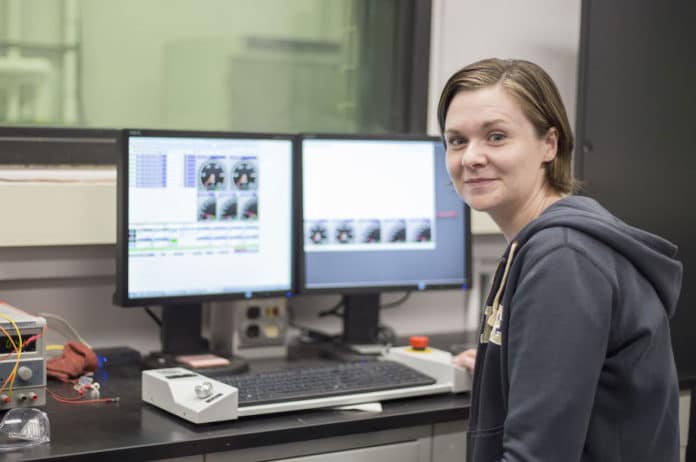Behind the glitz of electric cars is a transportation sustainability problem yet to be solved: large vehicles like long-haul trucks and airplanes are still very challenging to electrify. Alternative fuels may be a viable solution, but it is not as simple as topping up existing engines with the latest biofuel. Engines are designed with a specific fuel in mind.
Illinois Institute of Technology Associate Professor Carrie Hall has presented a simple and cost-effective solution to ease the transition to electrifying large vehicles. She has developed a new computer model that can help enable diesel engines to run on different alternative fuels with just a software update.
“Since we are focusing on a software upgrade, somebody can actually put that into their vehicle without incurring a lot of extra costs,” she says. “They’re not really going to have to change the hardware on their vehicle.”
One of the big obstacles in running a diesel engine on gasoline is the difference in reactivity. Gasoline fuel injected into an engine cylinder normally won’t burn until the engine provides a spark to start the fire, creating an explosion that will travel uniformly away from the spark through the engine cylinder.
Diesel, on the other hand, tends to spontaneously combust after it is compressed in the cylinder. When you try to run gasoline in a traditional diesel engine, the cylinder explosion may be unpredictable, or it might not burn at all. For this reason, the timing is essential as engine efficiency depends on running multiple cylinders in harmony.
“If fuel burns a little too early or too late, you don’t actually get all the benefit from it, and the efficiency is worse,” says Hall. To get the most out of burning gasoline, diesel engines need real-time information on when the fuel has ignited.
“Things that are actually happening inside the engine cylinder are really hard to measure in a cheap way,” says Hall. “So what we’re trying to do is take the information that we get from simpler, cheaper sensors that are outside of the actual engine cylinder where the combustion is happening, and from that diagnose what’s happening inside the engine.”
All this needs to happen in a fraction of a second, all the time. Some engine control designers achieve speed in their model by utilizing machine learning techniques or storing large data tables to avoid model calculations, but Hall has taken a different approach.
“We’ve been trying to create models that are based on the underlying physics and chemistry, even when we have these very complicated processes,” she says. “Recently, there’s been interest in using neural networks to model combustion. The problem is that then it’s just a black box, and you don’t really understand what’s happening underneath it, which is challenging for control because if you’re wrong, you can have something that goes very wrong.”
Hall began with the complicated version of the calculations and explored ways to simplify them until she found ways to describe the science with equations that were faster to solve while still achieving the industry standard of accuracy for control models. “We’ve tried to capture all the underlying effects, even if it’s in a more detailed way than we know we’re going to really be able to use for real-time control, and let that be our reference point. Then we simplify it down by using things like neural networks strategically, but we keep this overall structure so that we understand what each piece means and what it’s actually doing inside there,” says Hall.
The result is a leaner, more adaptable model. While a pure machine learning approach needs to be completely retrained for new fuel, Hall can simply update some parameters that correspond to measurable fuel properties.
“We’re working with those companies to try to help them understand the underlying combustion processes, but then also to build tools that they can potentially fold into their own software, and then enable their next generation of engines to use these fuels and use them well,” says Hall.
